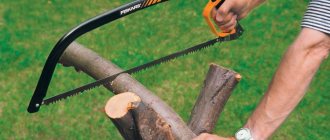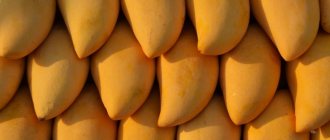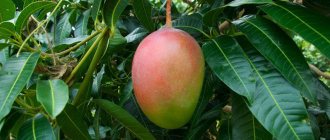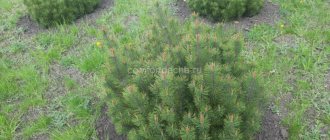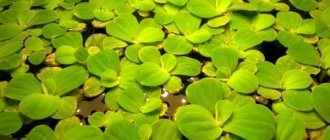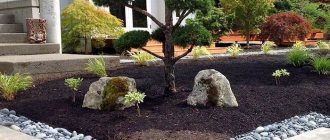From history: mysticism and religion
Fragrant mango fruits have been known to mankind for thousands of years. The history of its appearance on earth can be found in many modern religions.
In the Indian epic, the history of the mango fruit is associated with the many-armed god Shiva and his wife Parvati. Allegedly, Shiva recreated a mango tree on earth to please his beloved. Since then, the exotic mango fruit has been considered a symbol of passionate love.
Followers of Hinduism consider the fruit to be one of the incarnations of the god Prajayati - the Creator of All That Is. And Buddhist legend attributes the holiness of this plant to the fact that the Buddha himself washed his hands over the planted seed.
Royal mango - the sweetest variety
Its spread throughout the world is due to the development of trade routes. Traders brought mangoes from Persia to Africa and the Middle East. The Asian apple came to Europe during the campaigns of Alexander the Great.
In India, they believe that mangoes bring prosperity, comfort and happiness. The branches of the exotic plant are used to decorate houses, and the valuable fruit is placed in the foundation.
Find out all about the taste, benefits and aroma of macadamia nuts
How and where it grows
The genetic diversity of mango trees is concentrated in the regions of south and southeast Asia:
- Philippines;
- Indonesia;
- Burma;
- Sri Lanka;
- Pakistan;
- Bangladesh.
And yet, the tropical forests of Myanmar, the northeastern part of India, located at the foothills of the Himalayas, are called the birthplace of the fruit.
The mango tree loves sun and tropical climates. It is unpretentious to the composition of the soil, so it feels comfortable on the sandstones of Pakistan, Thailand, the rocky soil of Mexico, and the brackish limestones of Israel.
The height of an adult plant ranges from 10 to 45 meters. For the first 5 years it does not bear fruit or bloom. In mature trees, the fruiting period reaches 300 years. The color of the leaves determines the age: the crown of young trees is red, of mature trees - green. The leaves of very young shoots can be purple, almost black.
Each branch of the mango tree bears fruit at intervals of a year. Modern agricultural technologies allow specialists to obtain two harvests a year by “awakening” dormant branches, maintaining their order of participation in the process.
How to plant mango from seed at home
There are two ways to plant a mango tree:
- seedlings;
- bone.
When choosing the first method, almost absolute survival rate is guaranteed. The seedling can be bought at an exotic plant nursery and then transplanted into a spacious pot.
Sprouting mango seeds is a more labor-intensive process, but less expensive. It requires preliminary preparation of planting material, which is carried out as follows:
- Soak the bone for 5-7 days in warm water.
- Carefully open the softened planting material with a knife and remove the seeds.
- To protect against rotting and fungal damage, treat the seeds with a fungicide. We place them in wet sawdust.
- Move the container with sawdust to a warm, dark place. We moisturize periodically.
After three weeks, the first shoots will appear and can be transplanted into the ground.
How to replant correctly and with what frequency
The plant does not like frequent transplants. Initially, it is planted in a pot, at the bottom of which there is at least 5 cm of drainage made of pebbles or expanded clay. Caring for the seed and sprout is different:
- We deepen the seeds into the soil by 2 cm. We insulate the top with film, a jar or a cut plastic eggplant. We remove the insulation every day to avoid rotting of the roots. Keep the pot in a warm but dark place.
- The optimal conditions for “awakened” sprouts are constant sunbathing. A phytolamp will help replace them in winter.
The mango tree does not tolerate sudden temperature fluctuations and changes in soil composition.
During the first 3 years, the tree is replanted no more than once a year, choosing deep containers suitable for the plant’s root system. Then this process is carried out once every 3 years.
Quick dessert with mango, dragonfruit and strawberries
How to grow
To grow an exotic mango plant at home, you need to create favorable conditions for it, including:
- temperature regime at 25-26 degrees;
- daily spraying with a spray bottle, using a humidifier or placing containers of water near the tree;
- watering 2-3 times a week;
- monthly fertilizing with organic and mineral fertilizers.
At the age of 2-3 years, the mango tree is grafted.
The mango will also need pruning as it grows. When 8 leaves appear on the tree, pinching is carried out. Upon reaching a height of 1.5 m, formative pruning is carried out annually, leaving up to 5 shoots.
Mango tarte tatin
| • Mango – 2 pieces • Wheat flour to taste • Yeast-free puff pastry – 1 package• Sugar – ½ cup• Butter – 2 tablespoons• Lime zest – 1 teaspoon |
1. Peel the mango fruit and remove the core.
Cut each fruit into 8 pieces. Place the wedges on a separate plate. Finely grate the lime and add to the mango. 2. In a nonstick aluminum skillet, combine the sugar and 2 tablespoons still water over medium heat and heat until the sugar begins to caramelize, about 8 to 10 minutes. Do not stir the syrup or it will not take on a caramel color. Add butter and stir. Cook the caramel for another 2-3 minutes. Remove from heat. Place mango slices on caramel in a circle. 3. Preheat the oven to 195 degrees. 4. Thaw the layer of puff pastry. Place it on a floured surface and roll out into a circle with a diameter of 25 cm. If necessary, trim off any excess edges of the dough. 5. Place the circle of dough on top of the mango and tuck the edges inside. Press down on top with a plate to prevent it from rising during baking, and place in the oven for 15 minutes. Reduce the baking temperature to 180 degrees, remove the plate and continue baking for another 15 minutes. Remove from the oven and let cool slightly. Carefully turn the pie over and serve. Detailed step-by-step
tart
Bon appetit!
Composition and benefits of fruits for the body
The beneficial properties of mango fruit are due to the peculiarity of its composition. These data are shown in the table.
| Name | Quantity per 100 g |
| Squirrels | 0,82 |
| Fats | 0,38 |
| Carbohydrates | 14,98 |
| Water | 83,46 |
| Ash | 0,36 |
The energy value of 100 g of exotic mango fruit is 60-67 kcal, depending on the variety. The content of vitamins and microelements is distributed as follows:
| Name | Content per 100 g |
| Potassium | 168 mg |
| Phosphorus | 14 mg |
| Calcium | 11 mg |
| Magnesium | 10 mg |
| Sodium | 2 mg |
| Vitamin C | 36 mg |
| Vitamin B4 | 7.6 mg |
| Vitamin E | 1.12 mg |
| Vitamin A | 0.3 mg |
The components comprehensively heal the body, but mango fruit is especially useful for:
- prevention of the formation of kidney stones and the development of cancer of the blood, colon, breast, prostate;
- strengthening the heart muscle;
- lowering cholesterol levels and clearing blood vessels of cholesterol plaques;
- improving complexion, vision, memory;
- normalization of alkaline balance, digestive processes;
- increased libido;
- weight loss;
- strengthening the immune system.
Ayurveda classifies mangoes as aphrodisiacs. In some Asian countries, mango tree leaves are thrown at the feet of the newlyweds at weddings. It is believed that this helps the appearance of offspring.
Mango aroma and taste
The sweet, juicy fruit has different flavors - peach, melon, lemon. The pulp perfectly quenches hunger and thirst.
Regardless of the variety, the aroma of the fruits of the mango tree has light pine notes.
Difficulties in transportation for centuries have left mangoes in the rank of delicacies. The length of his stay on the road spoiled ripe fruits, and deprived unripe ones of juiciness and aroma.
Reviews from real people
What do buyers think about mangoes?
Feedback on the forum
Feedback on the forum
Feedback on the forum
Feedback on the forum
Feedback on the forum
Feedback on the forum
Feedback on the forum
There are many reviews and they are all positive.
Exotic use
The scope of application of the mango fruit covers several important industries, including cosmetology, cooking, and the confectionery industry.
Asian apple in cooking
In different cuisines of the world, both ripe and unripe pulp of exotic fruits is used to prepare salads, side dishes, and sauces. However, green mango can be added in moderation, as its high content of various acids can cause digestive problems and stool upset.
Mango with smoked chicken
The bright combination of smoked chicken with exotic fruits is complemented by nuts. 100 g of this dish contains 153 kcal. You can reduce calorie content by replacing smoked meat with boiled breast.
To prepare 4 servings of salad you will need:
- Mango - 1 pc.
- Avocado - 1 pc.
- Smoked chicken – 300 g
- Arugula – 100 g
- Pine nuts - 2 tbsp. l.
- Citric acid - 1 tbsp. l.
- Orange juice - 2 tbsp. l.
- Olive oil - 2 tbsp. l.
- Grainy mustard - 1 tbsp. l.;
- salt, pepper - to taste.
Some of the ingredients are needed for dressing.
Let's prepare it step by step:
- Fry the nuts until golden brown.
- Wash the arugula, dry it with a paper towel and tear it into pieces.
- Chop the chicken into small pieces.
- Peel the fruits and cut the pulp into slices. To prevent the avocado from darkening, sprinkle it with lemon juice.
Mango butter replaces cocoa butter in the confectionery industry. But due to the high cost of its production, the product was not widely used.
Place on a plate in layers: arugula, chicken, fruit. Pour a dressing of oil, juice, mustard and spices over the workpiece. Sprinkle everything with pine nuts.
Application in the beauty industry
An antiseptic oil reminiscent of shea butter is prepared from the pistachio-shaped mango seeds. It is used as a rub for muscle pain, as well as for pathologies such as:
- eczema and ulcerative skin lesions;
- itching from insect bites;
- dermatitis.
Asian apple pulp is suitable for all skin types. Masks and lotions based on it are made both using the product in its pure form and with the addition of accompanying cosmetic superfoods.
Mango butter restores skin elasticity and firmness. It is used in masks, creams, and in cryotherapy. It protects the skin from exposure to ultraviolet radiation and other aggressive environmental factors.
Fruit mask for dry skin
The composition saturates the dermis with vitamins, lipids, antioxidants, actively moisturizes and promotes cell regeneration.
You can make it at home using the following ingredients:
- Mango - 1 pc.
- Avocado - 1 pc.
- Honey - 2 tbsp.
Procedure for preparing a cosmetic product:
- Cut off the peel of the fruit. Grind in a blender to a paste consistency.
- Lightly heat the honey in a water bath.
- We combine it with the main ingredients.
Apply the composition to cleansed skin for 15-20 minutes, after which we wash with warm water. Remove the remainder with a sponge.
How to choose a fruit
There are about 300 varieties of mango fruit, of which the sweetest is Thai. Depending on the area where they grow, fruits are distinguished by shape, weight and color. According to the last criterion, it can be:
- yellow;
- dark green;
- red-green;
- purple;
- almost black.
Coloring does not affect the ripeness of the fruit. You can determine it by its aroma and elasticity. Unripe mango smells faintly of alcohol or turpentine. Also, its flesh is deformed and does not restore its shape when pressed.
The green mango fruit is eaten in India, Thailand and the Philippine Islands, adding it to salads and sauces. The fruit contains citric, oxalic and grape acids, an excess of which can cause stool upset in Europeans who are not accustomed to such cuisine.
a brief description of
Mango is the fruit of the plant of the same name, which belongs to the genus Sumacaceae. The cultivation of the fruit has long gone beyond its natural environment. Today, mango grows not only in places with a tropical climate, but also where it is possible to create conditions suitable for growing the tree.
How does mango grow and bloom?
The mango tree grows up to 10-40 m in height. The first leaves that appear are reddish in color, some may have a yellowish-pink or brownish-red tint. As the tree grows, the leaves change color, becoming dark green with a glossy surface. The leaves reach 5-12 cm in length.
Mango is considered a long-lived tree, as it can bear fruit for up to 300 years. The first fruits appear 6 years after planting. The tree blooms from December to the end of April. At this time, cone-shaped panicles are formed on it, in which many small yellow-pink flowers with a strong aroma reminiscent of the smell of a lily are collected. © https://ydoo.info/product/mango.htmlHowever, despite the large number of flowers, only a few fruits are produced from one panicle.
What do the fruits look like?
Mango fruits have a spherical, slightly elongated shape. Some find the ripened fruits similar to the shape of a human heart. The fruit is covered with a peel of unusual color. It combines and smoothly flows into each other three colors: green, red and yellow.
When does it ripen?
Mangoes ripen in July-August. During this period, it turns from a green, hard fruit into a reddish-yellow, soft, fruit full of pleasant aroma. When the fruits are fully ripe, they are collected and distributed to supermarkets around the world.
Taste and smell
The taste and smell of mango is impossible to forget. If you ask fruit lovers: “What does mango taste like?”, most often you will hear that it resembles a mixture of pineapple or peach, and some even compare the pulp to sweet carrots. The fruit has a refined, refreshing taste that cannot be confused with any other fruit.
And if everything is clear with the pulp, then the question is: “Do they eat mango peel?” - remains open. It contains no less useful substances than the fruit itself, but the peel is considered allergenic, so it is better to avoid eating it and enjoy the pulp alone.
By the smell of a mango you can determine its ripeness. A complete lack of aroma indicates that the fruit is unripe. The ripe fruit has a rich, slightly resinous odor. But a sharp, overly enhanced aroma indicates that the fruit is overripe.
Average weight of mango with and without pits
Mango reaches a size of 5-25 cm, and the average weight with a stone is 200-400 g. Some of the largest and rarest fruits can weigh up to 1-1.5 kg.
Calculating how much a pitted mango will weigh is quite simple. Of the total weight of the fruit, the weight of the stone is approximately 25%. It turns out that if a whole mango weighs 200 g, then the net weight of the pulp will be 150 g.
How to store mangoes depending on the degree of ripeness
In its entirety, ripe fruit cannot withstand more than 2 days in the refrigerator. Low temperatures contribute to loss of taste.
Peeled and sliced Asian apples can be stored for up to 3 months at temperatures down to minus 24 degrees. They are first placed in plastic containers. Re-freezing is not carried out.
The green fruit will ripen if it is wrapped in paper and left in the dark and warm for 2-4 days.
Mango smoothie
Contraindications
After eating mango fruits, it is not recommended to drink alcoholic beverages for 2 hours.
Mango is contraindicated for people:
- With individual intolerance;
- Allergic to it;
- For intestinal disorders;
- For pancreatitis;
- During the period of exacerbation of gastritis and stomach ulcers;
- For kidney problems.
It is not advisable to use it if a person has sensitive mucous membranes.
Excessive consumption of the fruit may cause constipation, colic, urticaria, and fever. The daily norm can be no more than 330 g - approximately 2 small fruits.
Where can I buy
You can buy mango fruit fresh, dried or dried . The price for them varies depending on the volume, country of origin and variety.
| Name | price, rub. |
| Dried mango, King (Vietnam), 1 kg | 1409 |
| Dried fruit pieces (Thailand), 250 g | 249 |
| Puree in an iron can (Myanmar), 430 g | 289 |
| Candied fruits (Thailand), 500 g | 279 |
| Puree (India), 850 g | 519 |
For its many beneficial properties for the body and diverse fruity notes, mango is called the “king of fruits.” Its juicy pulp is rich in vitamins and beneficial components that help maintain external and internal human health.

